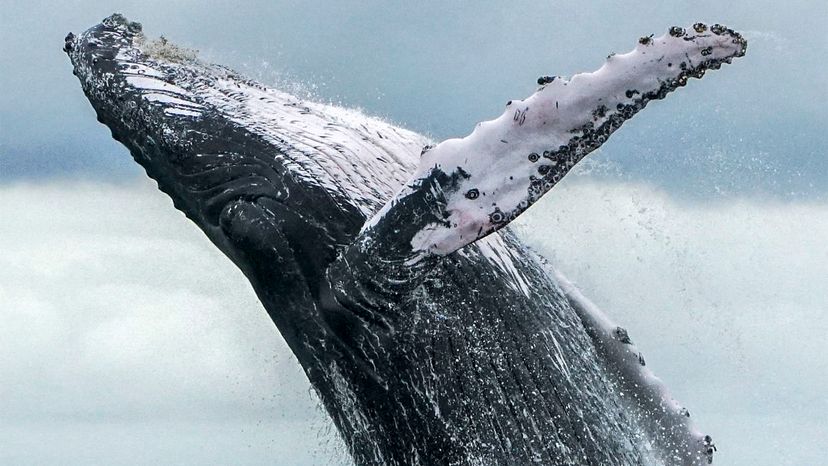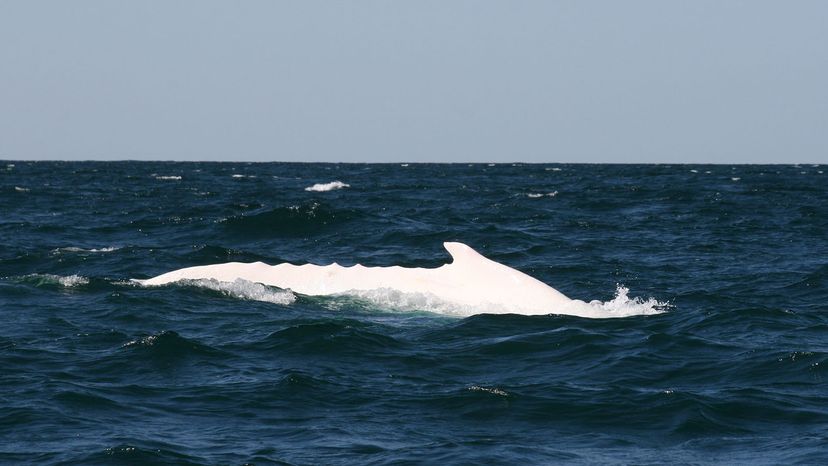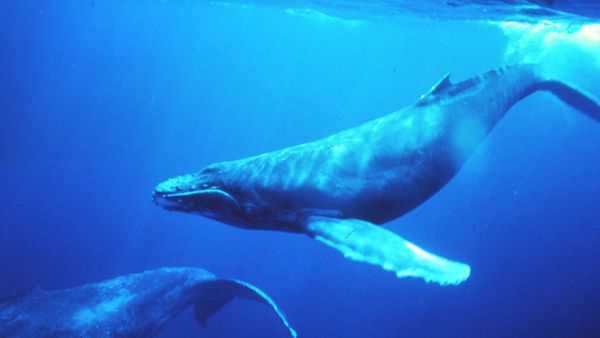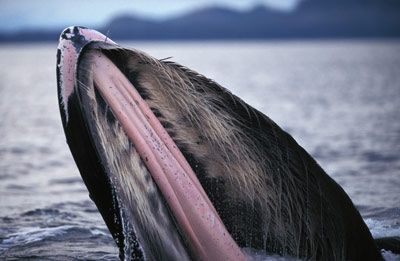
Known for their mystical songs, global travel and impressive gymnastics, humpback whales (Megaptera novaeangliae) are one of the ocean's most captivating and complex giants. While they aren't as big as the blue whale, the largest animal on the planet, humpback whales are still quite the whoppers, growing up to 60 feet (18.3 meters) long and weighing up to 40 tons (36 metric tons). That's about the length of one city bus but the weight of two.
The hump that forms under their small dorsal fin when they breach — the act of throwing part or all of their bodies out of the water — gives them their recognizable name. They have a uniquely huge tail and pectoral fins, their backside is black and their underbelly is a varying mix of both black and white. What appear from a distance to be decorative lines on their underside are actually ventral pleats. These pleats fold open and allow the whale's throat cavity to expand so they can scoop up copious amounts of water (and thus their prey) when they feed.
Advertisement
Humpback whales are one of 14 species of baleen whales, a type of whale that has baleen plates — long, bristly hairs made of keratin attached to their upper jaw — instead of teeth. Despite their massive size, humpback whales like to chow down on much smaller sea creatures — plankton, krill, anchovies, cod, sand lance and capelin. They gulp in enough water to fill a swimming pool, and then when they expel it, the baleen plates filter out those tiny, tasty creatures.
If you're imagining a diver getting scooped up in all that water, never fear. These massive whales aren't built to swallow large animals. While their esophagus stretches a little when they swallow a meal, their throat (and those of most whale species) isn't any wider than a human fist. And if you end up in their mouth by mistake, you'd promptly be spit out.
Such was the case for dive tour operator Rainer Schimpf when he accidentally found himself inside the mouth of another baleen whale, the bryde whale. He shares in this video that the experience was a unique and special moment, but it definitely wasn't a whale of a time:
Advertisement


